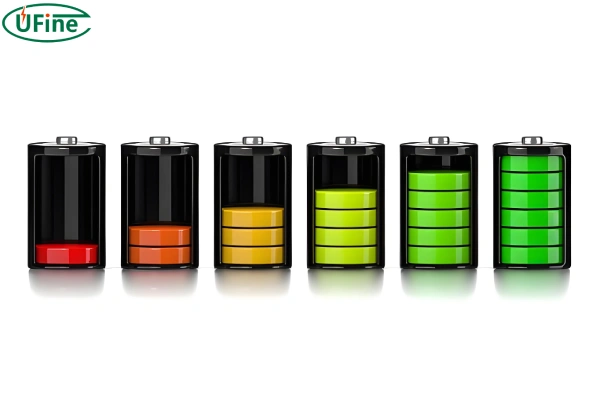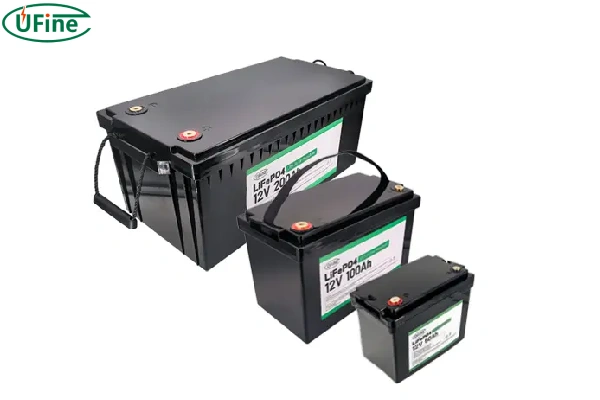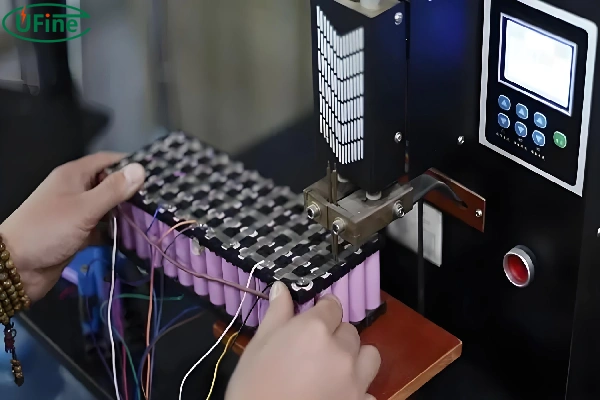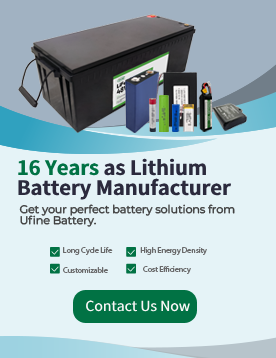
- Part 1. Understanding the core chemistry of 12V batteries
- Part 2. What actually determines battery lifespan
- Part 3. How long each type of 12V battery lasts?
- Part 4. Charging times
- Part 5. Real-world scenarios: which battery performs best
- Part 6. 12V STD and 12V AGM battery: which is better?
- Part 7. Key parameters when buying a 12V battery
- Part 8. Recommended products
- Part 9. How to extend the life of your 12V battery
- Part 10. FAQs
Most 12V batteries don’t last as long as you think—especially if they’re not the right type for your application. Whether you use them for cars, RVs, boats, or solar systems, the lifespan of a 12V battery depends on its chemistry, usage pattern, and maintenance.
In this guide, we’ll break down how long different types of 12-volt batteries last, what affects their lifespan, and how to choose the right one for your needs.
Part 1. Understanding the core chemistry of 12V batteries
Not all “12V batteries” are the same.
Their construction, internal materials, and charge–discharge behavior drastically affect how long they last.
| Type | Core Chemistry | Cycle Life | Energy Density | Maintenance | Typical Use |
|---|---|---|---|---|---|
| Flooded Lead-Acid (STD) | Lead + Sulfuric Acid | 300–500 cycles | 35–40 Wh/kg | High | Automotive starter, UPS |
| AGM (Absorbent Glass Mat) | Lead + Fiberglass Separator | 400–700 cycles | 35–50 Wh/kg | Low | Off-road, truck, RV |
| Gel Cell | Silica-Gelled Electrolyte | 500–800 cycles | 40–55 Wh/kg | Low | Solar systems, deep cycle |
| LiFePO₄ (Lithium Iron Phosphate) | Lithium + Iron Phosphate | 3000–5000 cycles | 100–160 Wh/kg | None | Energy storage, marine, solar, EV |
💡 Technical Insight: Each “cycle” represents one full charge and discharge.A standard AGM battery might lose 20–30% capacity after 500 cycles, while a LiFePO₄ battery retains over 80% after 3000+ cycles.
Part 2. What actually determines battery lifespan
The lifespan of a 12V battery depends on a complex interaction of factors — not just chemistry.
1 Depth of Discharge (DoD)
The deeper you discharge a battery before recharging, the shorter its lifespan.
- Lead-acid batteries last longest when limited to 30–50% DoD.
- LiFePO₄ batteries, however, tolerate up to 80–100% DoD with minimal degradation.
| Depth of Discharge | Lead-Acid Cycles | LiFePO₄ Cycles |
|---|---|---|
| 30% | ~1200 | ~6000 |
| 50% | ~700 | ~5000 |
| 80% | ~400 | ~3500 |
| 100% | ~250 | ~3000 |
2 Temperature
Every 10°C rise above 25°C cuts lead-acid battery life by half.
LiFePO₄ chemistry is far more temperature-tolerant, operating safely between -20°C and 60°C.
3 Charge Rate (C-rate)
Higher charging currents generate heat and gas buildup in lead-acid cells, accelerating corrosion.
LiFePO₄ batteries maintain internal stability even at 1C charge rates, allowing fast and efficient recharging.
4 Maintenance and Design
Flooded lead-acid batteries need water refilling and terminal cleaning.
AGM and gel reduce maintenance, but only LiFePO₄ batteries are truly maintenance-free — no corrosion, no sulfation, no acid leakage.
Part 3. How long each type of 12V battery lasts?
| Battery Type | Realistic Lifespan | Typical Replacement Interval | Key Limiting Factor |
|---|---|---|---|
| Flooded Lead-Acid | 2–4 years | 2–3 years | Sulfation & electrolyte loss |
| AGM | 3–6 years | 4–5 years | Plate corrosion |
| Gel Cell | 4–6 years | 5–6 years | Charging sensitivity |
| LiFePO₄ (Ufine Custom Pack) | 8–12+ years | 8–10 years | Balanced BMS protection ensures long life |
🔋 Fact: Independent testing shows LiFePO₄ retains >80% capacity after 10 years, whereas most AGM batteries drop below 60% after 5 years.
Part 4. Charging times
| Battery Type | Typical Charging Time | Notes |
|---|---|---|
| Lead-Acid | 8–12 hours | Slow charging; smart chargers recommended |
| AGM | 6–12 hours | Can handle higher currents; faster than lead-acid |
| Gel | 12–16 hours | Requires gel-specific charging settings |
| Lithium-Ion | 4–6 hours | Fast charging; modern chargers optimize charge cycles |
Part 5. Real-world scenarios: which battery performs best
| Application | Recommended Type | Reason |
|---|---|---|
| Daily-Driven Vehicle | AGM | Fast discharge, vibration-resistant |
| Off-Grid Solar or RV | LiFePO₄ | Long cycle life, light weight |
| Marine and Boat Systems | LiFePO₄ | Deep-cycle durability, corrosion resistance |
| Emergency Backup or UPS | Gel | Stable output, low maintenance |
| Heavy-Duty Trucks | AGM | Cold-cranking capability |
| Industrial or Military Use | Ufine Custom LiFePO₄ | Configurable voltage & current, extreme temperature tolerance |
Battery lifespan is no longer just about chemistry — it’s about efficiency, cycle durability, and total cost over time.
Traditional lead-acid batteries still serve in low-demand systems, but modern users are shifting rapidly toward lithium (LiFePO₄) for one reason: reliability.
If you want a custom-engineered 12V lithium battery designed for your power system — from marine to solar — Contact Ufine Battery today.
Our LiFePO₄ solutions deliver higher energy density, safer operation, and up to 10 years of continuous performance.
Part 6. 12V STD and 12V AGM battery: which is better?
Both use lead-acid chemistry, but AGM improves nearly every technical aspect:
| Feature | 12V STD | 12V AGM |
|---|---|---|
| Maintenance | Regular water refills | Maintenance-free |
| Positioning | Upright only | Any position |
| Vibration Resistance | Low | High |
| Cycle Life | 300–400 | 500–700 |
| Self-Discharge | High | Moderate |
| Price | Lower | Slightly higher |
| Value for Money | Short-term use | Long-term reliability |
Verdict: For modern vehicles or power systems, AGM is the better short-term investment —but if you’re focused on long-term total cost of ownership, LiFePO₄ batteries clearly outperform both.
Part 7. Key parameters when buying a 12V battery
- Capacity (Ah) – Higher capacity offers longer runtime.
- Cold Cranking Amps (CCA) – Crucial for engine starting in cold climates.
- Voltage – Ensure 12V compatibility with your device.
- Lifespan – Check estimated cycles or years of expected service.
- Size & Fit – Battery must fit the intended compartment.
- Brand & Warranty – Established brands with warranties ensure reliability.
Part 8. Recommended products
1 Lead-Acid Batteries
- Mighty Max 12V 18Ah SLA – UPS and security devices; $67.99
- Power-Sonic PS-1228-F1 – Medical equipment; $16.99
2 AGM Batteries
- Portalac PXL12180 – 18Ah, high-load applications; $104.99
- GS Yuasa NP38-12B FR – Reliable performance, critical devices; $159.99
3 Lithium-Ion Batteries
- SOK 12V 100Ah LiFePO4 – Blue-tooth monitoring, extreme environment ready; $299
- Renogy 12V 300Ah LiFePO4 – High-capacity for heavy-duty use; $1,335.99
Part 9. How to extend the life of your 12V battery
- Avoid deep discharge cycles. Recharge before reaching 20–30% capacity.
- Use smart chargers. Prevent overvoltage and maintain optimal charge curves.
- Store at 50–70% SOC (State of Charge) when idle for long periods.
- Inspect terminals regularly and clean corrosion.
- Monitor internal resistance using a professional tester.
- For lithium systems, ensure a BMS monitors every cell’s voltage and temperature.
Pro Tip: A high-quality Battery Management System (BMS) can extend LiFePO₄ battery life by 30–40%, especially under high-load or fluctuating temperature environments.
Part 10. FAQs
How long does a 12V lithium battery last compared to AGM?
LiFePO₄ lasts 3–4 times longer. While AGM typically endures 500–700 cycles, lithium batteries can exceed 4000+ cycles under proper conditions.
Why are lithium batteries more expensive?
The cost reflects advanced materials, BMS integration, and far longer lifespan. In total lifetime cost per kWh, lithium is actually cheaper.
How often should I recharge a 12V battery during storage?
Lead-acid batteries: every 2–3 months. LiFePO₄: every 6–12 months if stored around 50% SOC.
What is the longest lasting 12V battery chemistry?
LiFePO₄ (Lithium Iron Phosphate) — up to 12 years lifespan with stable voltage and minimal degradation.
Can I replace my AGM battery with lithium?
Yes. Just ensure the LiFePO₄ pack matches your system’s voltage, current, and size.
Related Tags:
More Articles
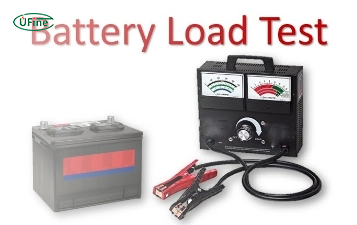
Battery Load Test: A Comprehensive Guide
Step-by-step battery load test guide for car, solar & industrial use. Learn how to load test a battery, interpret voltage charts, and avoid common mistakes.
The Comprehensive Guide to Battery Balancing and Battery Balancer
Discover how battery balancers improve lithium battery performance, lifespan, and safety. Learn types, functions, and tips to choose the right balancer.
What Is the Best Voltage for a Chainsaw Battery?
Compare 12V-80V chainsaw batteries for light pruning, medium firewood, and professional cutting. See best battery chainsaw with runtime charts and safety tips.
Lithium VS. Alkaline Batteries: A Comprehensive Comparison
Lithium batteries last 3–7× longer than alkaline and perform better in cold weather. Compare lifespan, cost, safety, and best uses to choose the right battery.
Comparing Lithium-Sulfur and Lithium-Ion Batteries: Which is Right for You?
Compare lithium-sulfur (Li-S) and lithium-ion batteries on energy, lifespan, cost, safety, and applications. Best choice for drones, EVs, and electronics.
